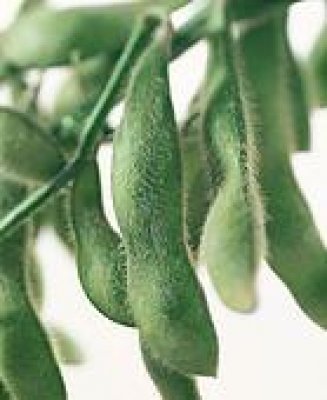Soya
 The origins of the soybean plant are obscure, but many botanists believe it to have derived from Glycine ussuriensis, a legume native to central China. The soybean has been used in China for 5,000 years as a food and a component of medicines. Soybeans were introduced into the United States in 1804 and became particularly important in the South and Midwest in the mid-20th century. The soybean is an erect, branching plant ranging in height from several centimetres to more than 2 m (6.5 feet). The self-fertilizing flowers are white or a shade of purple. Seeds can be yellow, green, brown, black, or bicoloured. In the United States, commercial varieties have brown or tan seeds, with one to four seeds per pod. The soybean may be cultivated in most types of soil, but it thrives in warm, fertile, well-drained, sandy loam.
The origins of the soybean plant are obscure, but many botanists believe it to have derived from Glycine ussuriensis, a legume native to central China. The soybean has been used in China for 5,000 years as a food and a component of medicines. Soybeans were introduced into the United States in 1804 and became particularly important in the South and Midwest in the mid-20th century. The soybean is an erect, branching plant ranging in height from several centimetres to more than 2 m (6.5 feet). The self-fertilizing flowers are white or a shade of purple. Seeds can be yellow, green, brown, black, or bicoloured. In the United States, commercial varieties have brown or tan seeds, with one to four seeds per pod. The soybean may be cultivated in most types of soil, but it thrives in warm, fertile, well-drained, sandy loam.
The most nutritious and most easily digested food of the bean family, the soybean is one of the richest and cheapest sources of protein. It is a staple in the diet of people and animals in numerous parts of the world today. Because soybeans contain no starch, they are a good soybean, also called Soja Bean, or Soya Bean, annual legume of the Fabaceae family and its edible seed, probably derived from a wild plant of East Asia. The soybean is economically the most important bean in the world, providing vegetable protein for millions of people and ingredients for hundreds of chemical products.